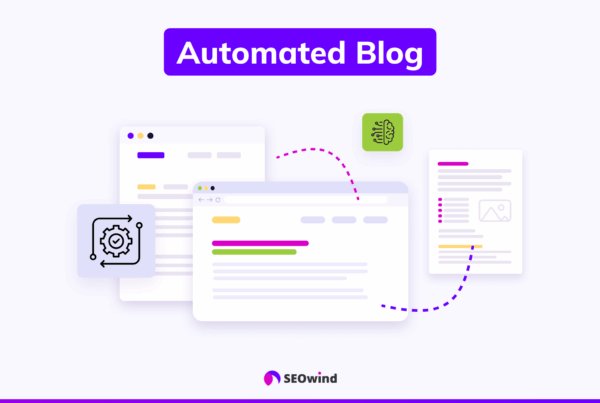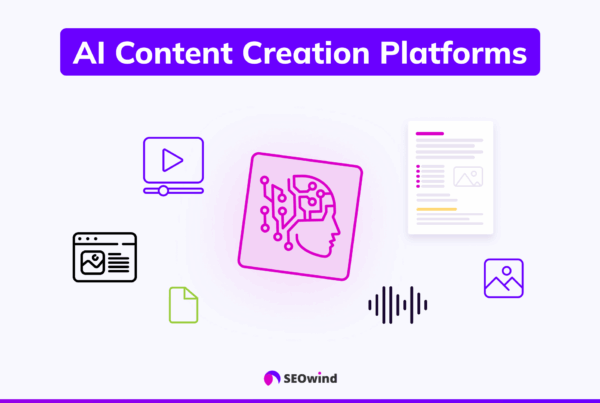In the fast-paced world of digital content, staying relevant and visible is a constant challenge. As a content creator, you pour your heart and soul into crafting compelling assets. But what happens when they start to lose their shine? Content republishing is a powerful strategy that can breathe new life into old content, boost your SEO, and attract new audiences. In this comprehensive guide, we’ll explore how this works and the benefits, best practices, and practical tips that will help you maximize your content’s reach and impact.
Understanding Republishing Content
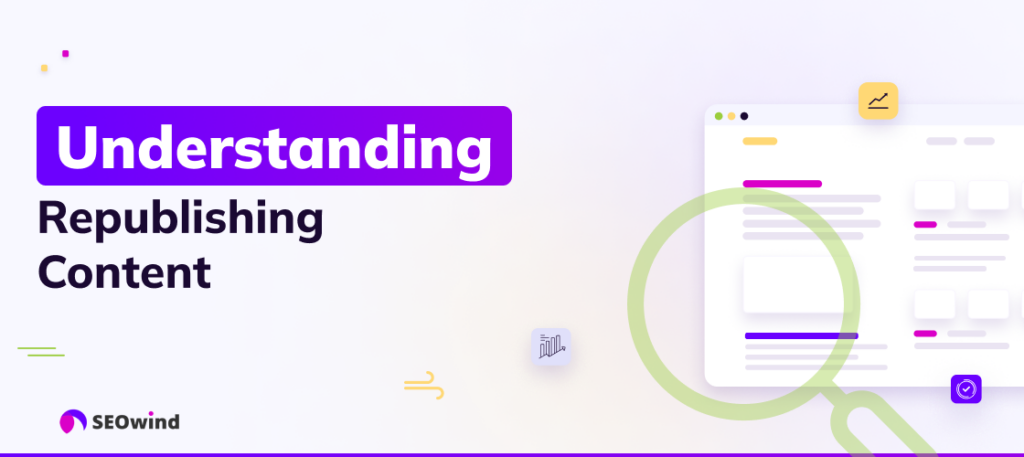
Let’s start by establishing a clear understanding of what this technique entails. Republishing content involves taking an existing piece of content, refreshing it with updated information, and then publishing it again, either on the same platform or a different one. It’s important to note that this process is distinct from simply duplicating content, which can negatively affect your SEO.
Distinction between Duplicate and Republished Content
Duplicate content refers to material that appears on multiple URLs or websites and is identical or substantially similar. Search engines frown upon duplicate content, which is seen as an attempt to manipulate search rankings. On the other hand, republished content involves strategically updating and re-promoting existing content, often with significant changes and improvements.
When republishing content, you’re not merely copying and pasting the original piece. Instead, you’re enhancing it with fresh insights, updated statistics, and new perspectives. This process adds value to the original content and signals to search engines that the piece is relevant and worthy of attention.
Why Republishing is Crucial for Digital Growth
Republishing content has become a crucial strategy for businesses and content creators alike. Here are some key reasons why:
- Keeping your content fresh and relevant: Updating and republishing old content ensures that your audience is always presented with the most current and accurate information. This helps maintain your brand’s credibility and authority in your niche.
- Boosting SEO and organic visibility: When you republish content with updated keywords, meta descriptions, and other SEO elements, you improve your chances of ranking higher in search engine results pages (SERPs). This increased visibility can drive more organic traffic to your website.
- Attracting new audiences: As your content ages, it may lose its appeal to your original audience. However, by refreshing and republishing it, you can reach new readers who may not have discovered your content before. This is particularly effective when you promote your republished content through social media and other channels.
- Maximizing the ROI of your content efforts: Creating high-quality content takes time, effort, and resources. By republishing your best-performing pieces, you extend their lifespan and get more mileage from your content investment.
In the next section, we’ll explore the strategic importance of republishing content and how it can help you achieve your digital growth goals.
The Strategic Importance of Republishing Content
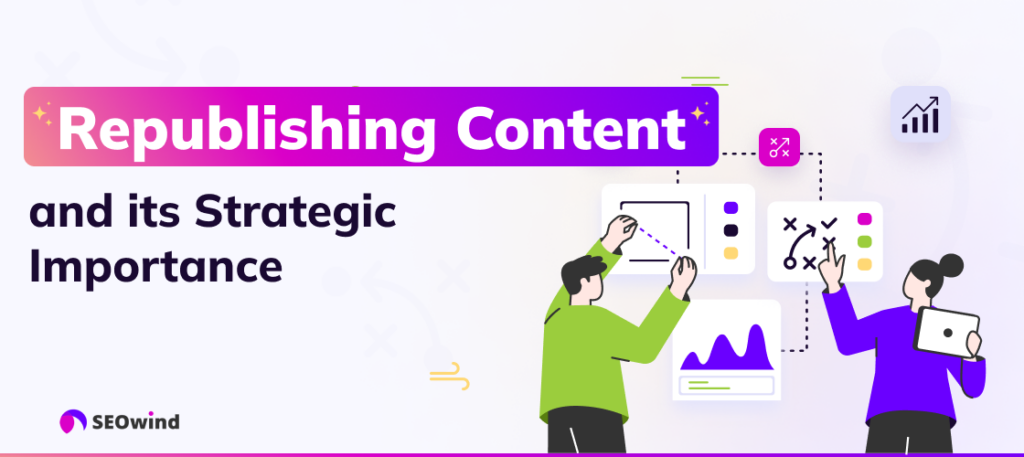
While content is of the utmost importance, it’s not just about creating new material. Republishing and updating your existing content is a strategic move that can significantly boost your online presence and engagement. By breathing life into your old posts, you can attract new readers, improve search engine rankings, and establish your brand as an industry thought leader.
Your old content is a goldmine waiting to be rediscovered. It’s already proven its worth by attracting traffic and engagement in the past. But as time passes, even the most evergreen content can start to feel a bit stale.
By updating your old posts with fresh insights, new data, and improved formatting, you can make them relevant again for your existing audience and new readers who may have missed them the first time. This not only saves you time and resources compared to creating entirely new content but also allows you to build upon the authority and credibility you’ve already established.
Moreover, search engines love fresh content. By republishing your old posts with updated information and optimized keywords, you can improve your search rankings and drive more organic traffic to your site. This is especially important in today’s competitive digital landscape, where businesses are constantly vying for the top spots in search results.
But the benefits of content republishing go beyond just SEO. By regularly updating your old content, you can also:
- Reinforce your brand’s expertise and thought leadership
- Provide more value to your audience by keeping your content accurate and up-to-date
- Encourage new readers to explore your other content and engage with your brand
- Maximize the ROI of your content creation efforts by getting more mileage out of your existing assets
In short, content republishing is a powerful strategy that every digital marketer and content creator should have in their toolkit. By leveraging the full potential of your existing content, you can drive more traffic, engagement, and conversions while solidifying your brand’s online presence. So, don’t let your old content gather dust. Instead, give it a fresh coat of paint and watch it shine again!
Benefits of Refreshing and Republishing Old Content

Refreshing and republishing old content can be a game-changer for your digital growth strategy. By breathing new life into existing blog posts, you can unlock a wealth of benefits that can propel your online presence to new heights.
Boosting SEO and Organic Visibility
One of the most significant benefits of refreshing your blog content is the potential to improve your search engine rankings. When you update an old post with fresh, relevant information, search engines take notice. They appreciate the effort you put into keeping your content current and valuable to readers.
By incorporating targeted keywords, optimizing meta descriptions, and enhancing the overall quality of your content, you can boost your chances of ranking higher in search results. This increased visibility leads to a surge in organic traffic, exposing your brand to a broader audience and attracting potential customers who are actively seeking the information you provide.
Attracting New Audiences with Updated Insights
As time passes, your target audience evolves, and their needs and preferences change. By refreshing your blog posts, you can align your content with your readers’ current interests and pain points. This strategic approach allows you to attract new audiences who may not have discovered your brand otherwise.
Updating your content with the latest industry trends, cutting-edge research, and fresh perspectives demonstrates a commitment to staying ahead of the curve. This appeals to new readers and keeps your existing audience engaged and coming back for more. By consistently delivering value through updated insights, you can expand your reach and foster a loyal following of readers who trust your expertise.
Maximizing the Return on Investment (ROI)
Creating high-quality content requires a significant investment of time, effort, and resources. However, by republishing and refreshing your existing content, you can maximize the ROI of your content creation efforts. This approach allows you to make the most of your existing assets, ensuring they continue generating traffic, engagement, and conversions long after their initial publication. Maximizing your ROI through content republishing is a smart strategy to help you achieve your digital growth goals more efficiently.
Reinforcing Your Brand’s Authority and Expertise
Refreshing and republishing your blog content is not just about attracting new audiences; the goal is to reinforce your brand’s authority and expertise in your industry.
By showcasing a deep understanding of your niche and an ability to provide accurate, up-to-date information, you establish yourself as a trusted resource for your target audience. This enhanced credibility helps improve brand loyalty, as readers rely on your expertise and view your brand as a go-to source for valuable insights. It can also lead to more backlinks, social shares, and mentions, further solidifying your position as an authority in your industry. By leveraging the power of republished content, you can strengthen your brand’s reputation and establish a competitive edge in your market.
Challenges to Avoid in Republishing

While republishing content can be a powerful strategy for boosting your digital presence, it’s not without its risks. One common mistake is simply copying and pasting old content without making any updates or improvements. This approach fails to provide additional value to your audience and can be penalized by search engines for duplicating content.
Another mistep that often plagues brands is republishing content too frequently or without a clear purpose. Be strategic about the pieces you choose to refresh and ensure that each republished article aligns with your overall content marketing goals. Randomly selecting articles to republish without considering their relevance or potential impact can lead to a disjointed content strategy and confuse your audience.
When updating old content, it’s crucial to strike a balance between preserving the original article’s essence and making meaningful improvements. Overhauling an article to the point where it no longer resembles the original may alienate readers who have previously engaged with the content. Instead, focus on refining and expanding upon the existing information, ensuring that any changes add genuine value.
Finally, failing to promote your republished content effectively is a common issue. Simply updating an old article and hoping for the best is not enough. To maximize the impact of your refreshed content, develop a comprehensive promotion plan that includes social media sharing, email marketing, and outreach to relevant influencers or publications. By actively promoting your republished content, you can attract new readers and drive engagement with your brand.
Identifying Content for Republishing

When selecting the content to republish, you should consider several key factors. Not all old content is created equal, and it’s crucial to identify the pieces that have the most potential for improvement and renewed success.
Criteria for Selecting Underperforming Content
To determine which articles are prime candidates for republishing, start by analyzing your content’s performance metrics. Look for blog posts that have experienced a decline in organic traffic, rankings, and engagement over time. These assets can benefit most from a refresh.
Additionally, consider the relevance and timeliness of the content. Articles that cover evergreen topics or provide valuable insights that remain applicable today are excellent contenders for republishing. On the other hand, materials that are outdated or no longer align with your brand’s message may not be worth the effort.
Assessment Tools and Techniques
To effectively assess your content’s performance, leverage the power of analytics tools like Google Analytics and Google Search Console. These platforms provide valuable data on traffic, bounce rates, time on page, and other key metrics that help identify underperforming articles.
Another effective technique is to conduct a content audit. This involves systematically reviewing your entire content library and evaluating each piece based on predefined criteria such as relevance, quality, and engagement. By categorizing your content into different buckets (e.g., keep as-is, update, retire), you can prioritize which articles to focus on for republishing.
The Role of Backlink Analysis
In addition to on-page metrics, make sure to consider your content’s backlink profile. Backlinks from reputable sources signal to search engines that your content is valuable and authoritative. By analyzing the backlinks pointing to your articles, you can identify pieces that have the potential to rank higher with some strategic updates.
Tools like Ahrefs, SEMrush, and Moz can help you conduct a thorough backlink analysis. Look for articles that have a solid foundation of high-quality backlinks but may be underperforming in terms of traffic and rankings. These assets are prime candidates for republishing, as they have already received a vote of confidence from other websites.
Best Practices for Republishing Content for Enhanced SEO
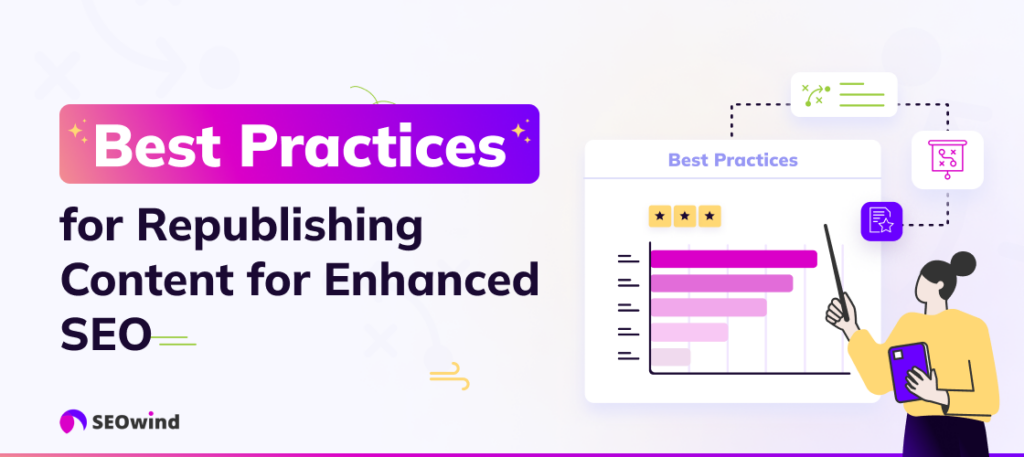
When republishing content, you should follow several best practices to ensure your efforts yield the best possible SEO results. Focusing on key areas such as search intent, competitor research, and content freshness allows you to breathe new life into your older posts and attract more organic traffic.
Aligning with Search Intent: The Key to Relevance
One of the most crucial aspects of successful content republishing is ensuring that your updated content aligns with the current search intent for your target keywords. Search intent refers to the underlying reason behind a user’s search query, and it can change over time as user needs and preferences evolve.
To align your republished content with search intent, start by analyzing the top-ranking pages for your target keywords. Look for common themes, content formats, and the type of information users want. By understanding this, you can tailor your updated content to meet their needs and improve your chances of ranking higher in search results.
Thoroughly Research Top-ranking Competitor Pages
In addition to analyzing search intent, it’s essential to conduct thorough research on your top-ranking competitor pages. This will give you valuable insight into what’s working well for them and help you identify areas where you can improve your own content.
When researching competitor pages, pay attention to factors such as:
- Content length and depth
- Use of multimedia (images, videos, and infographics)
- Internal and external linking strategies
- Content structure and formatting
- Engagement metrics (time on page, bounce rate, social shares)
By understanding what makes your competitors’ content successful, you can incorporate similar elements into your republished content and potentially outrank them in search results.
Updating Titles, Meta Descriptions, and Imagery for Freshness
Another key aspect of successful content republishing is updating your titles, meta descriptions, and imagery to reflect the freshness of your content. This helps to attract more clicks from search results and signals to search engines that your content has been recently updated and is more relevant to users.
Focus on creating compelling, click-worthy phrases that accurately reflect the content of your updated post. Use your target keywords naturally, and aim to keep your titles under 60 characters and your meta descriptions under 160 characters to ensure they display properly in search results.
Similarly, updating your post’s imagery can give it a fresh, modern look and improve user engagement. Consider using high-quality, relevant images that complement your content and add visual interest.
Incorporating New Data and Statistics to Maintain Accuracy
One of the most important reasons to republish content is to ensure it remains accurate and up-to-date. Over time, data, statistics, and other information in your posts may become outdated or irrelevant, which can negatively impact your credibility and SEO performance.
Take the time to research and incorporate new data and statistics that support your key points. This will not only help maintain the accuracy of your content but also demonstrate to users and search engines that your post is current and valuable.
Be sure to cite your sources and link to reputable, authoritative websites whenever possible. Doing so boosts your own credibility and provides additional value to your readers.
The Importance of Adding New, Value-driven Sections
Finally, one of the most effective ways to enhance your republished content is by adding new, value-driven sections that expand upon your original post. This can make your content more comprehensive, engaging, and valuable to users, ultimately improving your SEO performance.
When adding new sections to your republished content, focus on topics that are closely related to your primary subject matter and provide additional insights, tips, or examples. You might consider adding:
- Case studies or real-world examples
- Step-by-step tutorials or guides
- Expert quotes or interviews
- Frequently Asked Questions (FAQ)
- Actionable tips or best practices
By adding new, value-driven sections to your republished content, you’ll create a more robust, informative resource that attracts more backlinks, social shares, and organic traffic over time.
Technical Considerations in Republishing
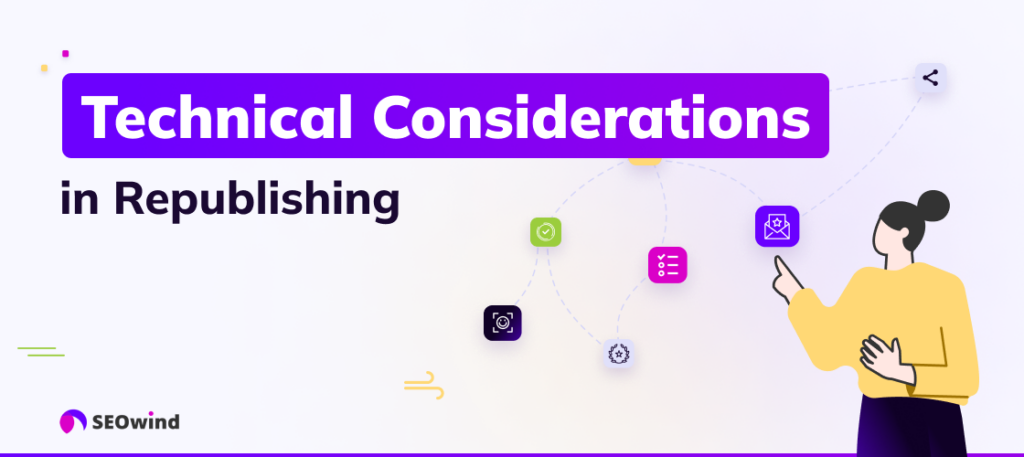
When it comes to republishing content, there are a few technical aspects you need to consider to ensure a smooth and effective process. These factors can significantly impact your SEO and user experience, so it’s crucial to make informed decisions.
To Change or Not to Change the URL? Decision Factors
One of the most critical decisions you’ll face when republishing content is whether to keep the original URL or create a new one. This decision can have far-reaching implications for your SEO and user experience.
Benefits of Retaining the Original URL
In most cases, it’s best to keep the original URL when republishing content. Here’s why:
- Preserving existing backlinks: If your original content has already earned valuable backlinks, changing the URL could break those links and negate their SEO value.
- Maintaining social proof: If your original content has been shared extensively on social media, changing the URL could reset those share counts, making your content appear less popular.
- Avoiding confusion for returning visitors: If a user has bookmarked or remembered your original URL, changing it could lead to confusion and frustration when they try to revisit the content.
Circumstances Where a New URL Might Be Beneficial
While keeping the original URL is generally the best approach, there are some situations where creating a new URL might be advantageous:
- Significant content changes: If you’ve made substantial changes to the content, such as targeting a new keyword or completely rewriting the article, a new URL could signal to search engines that this is essentially a new piece of content.
- Consolidating multiple pages: If you’re combining several related pages into one comprehensive resource, creating a new URL for the consolidated content can help avoid confusion and ensure a cohesive user experience.
- Improving URL structure: If your original URL was poorly structured or didn’t include relevant keywords, creating a new, optimized URL could enhance your SEO efforts.
Updating the Publication Date: Best Practices
Another key technical consideration when republishing content is whether to update the publication date. Here are some best practices to follow:
- Update the date if the content has been significantly revised: If you’ve made substantial updates to the content, such as adding new sections, updating statistics, or incorporating new insights, updating the publication date can signal to users and search engines that the content is fresh and relevant.
- Use schema markup to indicate the updated date: Implementing schema markup allows you to specify the original publication date and the date of the most recent update, providing clear signals to search engines while preserving the original publication date’s SEO value.
- Be transparent with your audience: If you update the publication date, consider adding a note to the content indicating when it was originally published and when it was last updated. This transparency helps build trust with your audience and ensures they have a clear understanding of the content’s freshness.
By carefully considering these technical aspects and following best practices, you can ensure that your republished content is well-optimized, user-friendly, and poised to maximize its reach and impact.
How to republish content with AI and SEOwind

Republishing content is a powerful strategy to breathe new life into your existing articles and maximize their reach. With the help of AI and SEOwind, the process becomes even more efficient and effective. SEOwind is a long-form AI Writer that enables you to create comprehensive, high-quality articles based on thorough SEO and content research.
To republish content using AI and SEOwind, follow these simple steps:
Step 1: Provide us with focus keyword and article link

To begin republishing your content with SEOwind, provide us with the focus keyword and the link to the article you want to refresh. This crucial information helps our AI-powered system understand the context and intent of your content, enabling us to deliver targeted improvements that align with your SEO goals.
When selecting your focus keyword, consider the main topic or theme of your article. This keyword should accurately represent the core message you want to convey to your audience. Choose a keyword that has significant search volume and relevance to your industry or niche. Focusing on a well-researched keyword ensures that your republished content attracts the right audience and drives organic traffic to your website.
In addition to the focus keyword, providing the link to your existing article is equally important. This link serves as a reference point for our AI algorithms to analyze your current content structure, tone, and overall performance. By examining your article’s existing elements, such as headings, subheadings, and body content, our system can identify areas that require updates, additions, or optimization.
In addition, having access to your article link allows SEOwind to thoroughly analyze your content’s current search engine rankings and visibility. This analysis helps us determine the most effective strategies for improving your article’s SEO performance, such as incorporating relevant keywords, optimizing meta tags, and enhancing readability.
By providing SEOwind with your focus keyword and article link, you set the foundation for a successful content republishing process. Our AI-driven system leverages this information to create a tailored plan that maximizes your content’s potential, ensuring that your refreshed article resonates with your target audience and achieves higher search engine rankings.
Step 2: Choose the features to upgrade
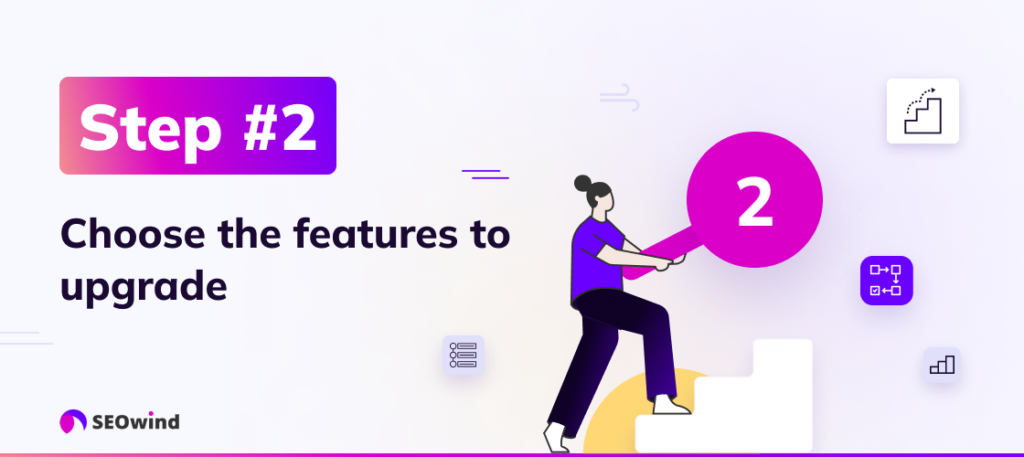
When you’re ready to republish your content with SEOwind, the next step is to select the specific features you want to enhance. This allows you to tailor the republishing process to your unique needs and goals. Next, let’s explore some of the key features SEOwind offers to elevate your content.
Add Internal links
One of the most potent ways to boost your content’s SEO is by strategically adding internal links. Internal linking helps search engines understand your site structure and distribute link equity throughout your website. However, manually identifying the best internal linking opportunities can be time-consuming and tedious.
That’s where SEOwind comes in. Once you integrate your Google Search Console (GSC) with SEOwind, our AI-powered tool will automatically analyze your content and suggest relevant internal links. This saves you valuable time and ensures that your internal linking strategy is optimized for maximum SEO impact.
Add stats and quotes
Adding compelling statistics and quotes to your content can significantly enhance its credibility and engagement. When readers see data-backed insights or expert opinions, they’re more likely to trust your content and perceive your brand as an authority in your niche.
SEOwind takes the hassle out of researching and incorporating stats and quotes. Our AI algorithms scour reliable sources to find the most relevant and up-to-date information related to your content. Then, SEOwind intelligently inserts these stats and quotes into your article, ensuring they seamlessly blend with your existing content.
Add your custom insights
While SEOwind’s AI is incredibly powerful, we understand that you, as the content creator, have unique insights and expertise to share. That’s why we offer the option to add your custom insights to the republishing process.
Simply provide SEOwind with your specific insights, and our AI will intelligently incorporate them into your content. This allows you to maintain your brand’s unique voice and perspective while still leveraging the benefits of AI-assisted content optimization.
SEOwind empowers you to create a republishing strategy that maximizes your content’s potential by choosing the features that align with your content goals. Whether it’s boosting SEO through internal linking, adding credibility with stats and quotes, or infusing your own insights, SEOwind is here to help you refresh and elevate your content with ease.
Step 3: Enjoy the updated content
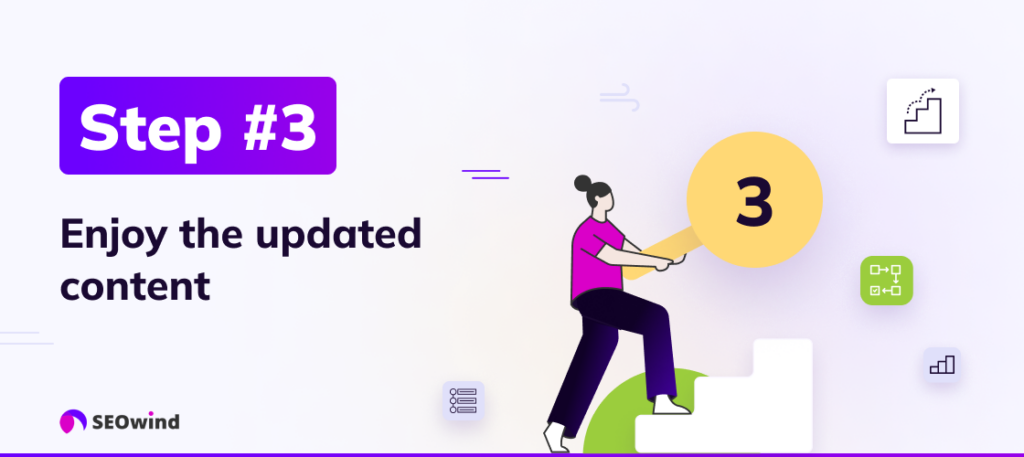
Once you’ve provided us with your focus keyword and article link and selected the features you’d like to upgrade, it’s time to sit back and let our team work its magic. We understand that creating high-quality, engaging content can be time-consuming and resource-intensive. That’s why we’ve developed a streamlined process to help you refresh and maximize the reach of your existing content.
We fill in the content gaps
Our AI writing tool begins by researching your chosen topic. We analyze the top-ranking pages in the SERPs to identify the main elements that make them successful. This includes examining their content structure, the topics they cover, and the depth of information they provide.
By comparing your existing article to the top-performing content in the SERPs, we can pinpoint areas where your assets may be lacking. This could include missing subtopics, outdated information, or a lack of depth in certain sections. Our goal is to ensure that your refreshed content not only matches but exceeds the quality and relevance of your competitors’ articles.
Relevant prompts fill in content gaps
Once we’ve identified the content gaps in your article, it’s time to let our AI-powered system work its magic. We’ve trained our AI using vast amounts of data and relevant prompts to ensure it can generate high-quality, engaging content that seamlessly integrates with your existing piece.
Our AI system considers the context of your article, your target audience, and the identified content gaps to create new sections, paragraphs, and sentences that enhance the overall value of your material. By leveraging the power of AI, we can quickly and efficiently fill in the missing pieces of your content puzzle, ensuring that your refreshed article is comprehensive, informative, and engaging.
Some of the key areas where our AI system excels include:
- Adding relevant statistics and data points to support your arguments
- Incorporating expert quotes and insights to lend credibility to your content
- Generating new examples and case studies to illustrate key concepts
- Crafting compelling subheadings and transitions to improve readability and flow
By combining the strengths of human expertise and AI-powered content generation, we can deliver a refreshed article that exceeds your expectations. Your updated content will be well-researched, comprehensive, and optimized for both search engines and readers, helping you attract new audiences and maximize your content’s reach.
Republishing Logistics: How to Effectively Relaunch Your Content
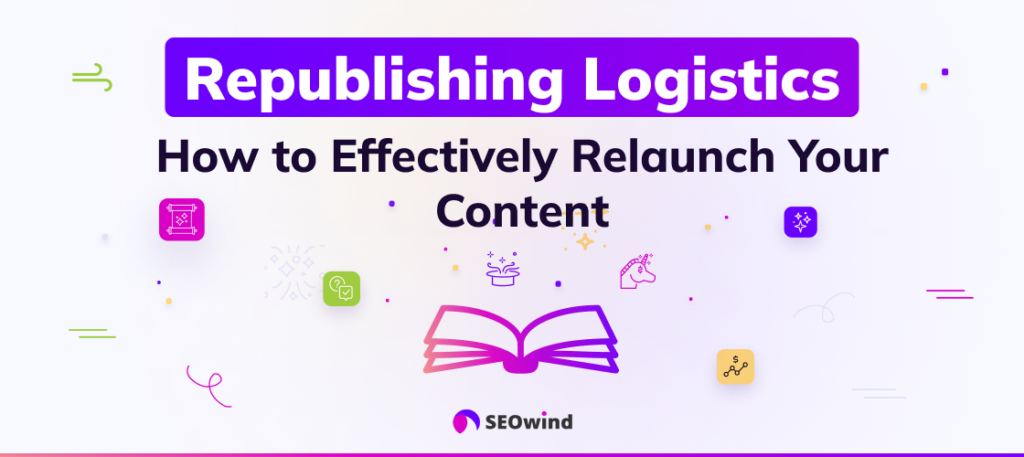
Republishing content is not just about hitting the “publish” button again. It’s a strategic process that requires careful planning and execution to maximize the impact of your refreshed content.
The Process of Republishing on Your Platform
When you’re ready to republish your updated content, the first step is to ensure a seamless transition on your website or blog. If you’ve decided to keep the original URL, simply replace the old content with the new, refreshed version. This allows you to retain any existing backlinks and social shares associated with that URL.
However, if you’ve opted for a new URL, set up a 301 redirect from the old URL to the new one. This ensures that any traffic and link equity from the original piece is properly transferred to the updated version. Don’t forget to update any internal links within your site that also point to the old URL.
Social Sharing Strategies Post-republishing
Once your refreshed content is live, it’s time to spread the word. Share the updated asset across your social media channels, highlighting the new insights and value it provides. Engage with your followers by asking for their thoughts and opinions on the topic, fostering a sense of community and encouraging discussion.
Reach out to influencers or thought leaders in your niche who may find the updated content valuable. If they share it with their audience, you can tap into a wider network of potential readers. Additionally, if you have an email list, send out a newsletter highlighting the refreshed content and inviting subscribers to check it out.
Monitoring Performance Post-update: Tools and Metrics
After republishing, you need to monitor the performance of your updated content to gauge its effectiveness. Use tools like Google Analytics to track metrics such as page views, time on page, and bounce rate. Compare these metrics to the performance of the original piece to see if the updates have had a positive impact.
Keep an eye on your search engine rankings for the target keywords associated with the refreshed content. Tools like SEMrush or Ahrefs can help you monitor your rankings and track any improvements over time. If you notice a significant uptick in organic traffic, it’s a good indication that your republishing efforts are paying off.
Don’t forget to monitor social shares and engagement as well. Use social media analytics tools to track likes, comments, and shares on the platforms where you’ve promoted the updated content. This feedback can provide valuable insights into how well the refreshed piece resonates with your audience.
FAQ
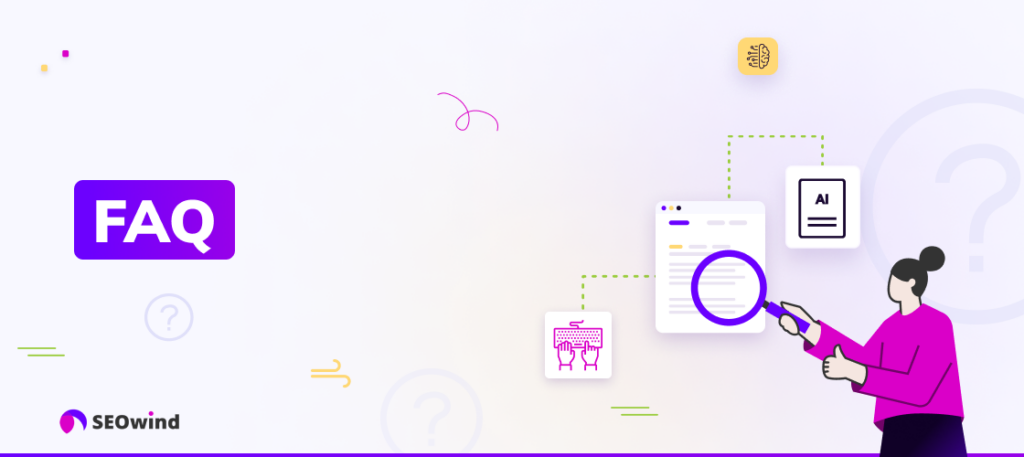
Which content should you republish?
The key to successful republishing lies in selecting the right content. Focus on evergreen pieces that have performed well in the past but have seen a decline in traffic or engagement over time. Blog posts, articles, or guides that cover topics of ongoing relevance to your audience are prime candidates for republishing.
Additionally, consider content that aligns with your current business objectives and marketing strategies. If you’ve recently expanded your product line or services, republishing related content can help drive traffic to these new offerings.
Where do you republish your content?
When republishing, consider the platforms that will yield the most significant impact. Your own website or blog should be the primary focus, as this is where you have the most control over the content and can directly benefit from increased traffic and engagement.
However, don’t overlook the potential of republishing on external platforms such as Medium, LinkedIn, or industry-specific publications. These outlets can expose your content to new audiences and establish your brand as a thought leader in your niche.
Will republishing blogs affect SEO?
One of the most common concerns about republishing is its impact on SEO. When done correctly, republishing can actually boost your SEO efforts. By updating and refreshing your content, you signal to search engines that your site is active and provides current, relevant information to users.
To avoid potential SEO mistakes, ensure that you’re not creating duplicate content. Use canonical tags to indicate the original source of the content and avoid keyword stuffing or over-optimization in your updated pieces.
Should I republish content from a year ago or just update it?
The answer to this question depends on the nature of the content and the extent of the updates required. If the original piece is still largely relevant and only needs minor adjustments, such as updating statistics or adding new examples, then updating the existing post may be enough.
However, if the content requires significant changes to align with current industry trends, user needs, or your brand’s messaging, republishing the piece as a new entity may be the better option. This approach allows you to promote the content as a fresh resource and attract new readers.
How often should I republish blog posts?
The frequency of republishing blog posts varies depending on your content strategy and the volume of content you produce. As a general rule, aim to review and consider republishing your top-performing evergreen content every 6-12 months.
This timeframe allows you to keep your content fresh and relevant while avoiding overwhelming your audience with too many updates. Not every piece of content needs to be republished; focus on those that have the potential to drive the most value for your brand and audience.
